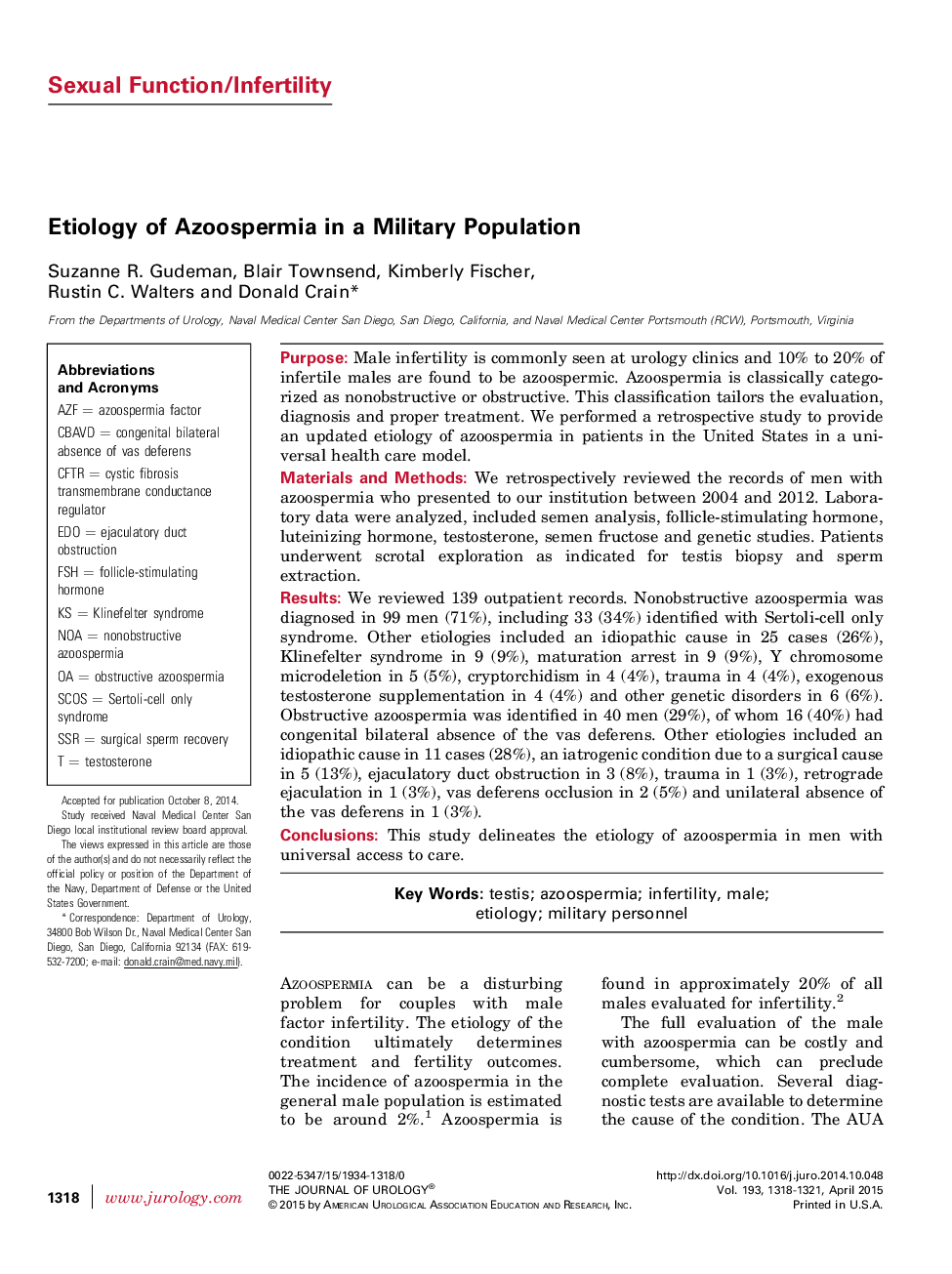| Article ID | Journal | Published Year | Pages | File Type |
|---|---|---|---|---|
| 3861565 | The Journal of Urology | 2015 | 4 Pages |
PurposeMale infertility is commonly seen at urology clinics and 10% to 20% of infertile males are found to be azoospermic. Azoospermia is classically categorized as nonobstructive or obstructive. This classification tailors the evaluation, diagnosis and proper treatment. We performed a retrospective study to provide an updated etiology of azoospermia in patients in the United States in a universal health care model.Materials and MethodsWe retrospectively reviewed the records of men with azoospermia who presented to our institution between 2004 and 2012. Laboratory data were analyzed, included semen analysis, follicle-stimulating hormone, luteinizing hormone, testosterone, semen fructose and genetic studies. Patients underwent scrotal exploration as indicated for testis biopsy and sperm extraction.ResultsWe reviewed 139 outpatient records. Nonobstructive azoospermia was diagnosed in 99 men (71%), including 33 (34%) identified with Sertoli-cell only syndrome. Other etiologies included an idiopathic cause in 25 cases (26%), Klinefelter syndrome in 9 (9%), maturation arrest in 9 (9%), Y chromosome microdeletion in 5 (5%), cryptorchidism in 4 (4%), trauma in 4 (4%), exogenous testosterone supplementation in 4 (4%) and other genetic disorders in 6 (6%). Obstructive azoospermia was identified in 40 men (29%), of whom 16 (40%) had congenital bilateral absence of the vas deferens. Other etiologies included an idiopathic cause in 11 cases (28%), an iatrogenic condition due to a surgical cause in 5 (13%), ejaculatory duct obstruction in 3 (8%), trauma in 1 (3%), retrograde ejaculation in 1 (3%), vas deferens occlusion in 2 (5%) and unilateral absence of the vas deferens in 1 (3%).ConclusionsThis study delineates the etiology of azoospermia in men with universal access to care.
